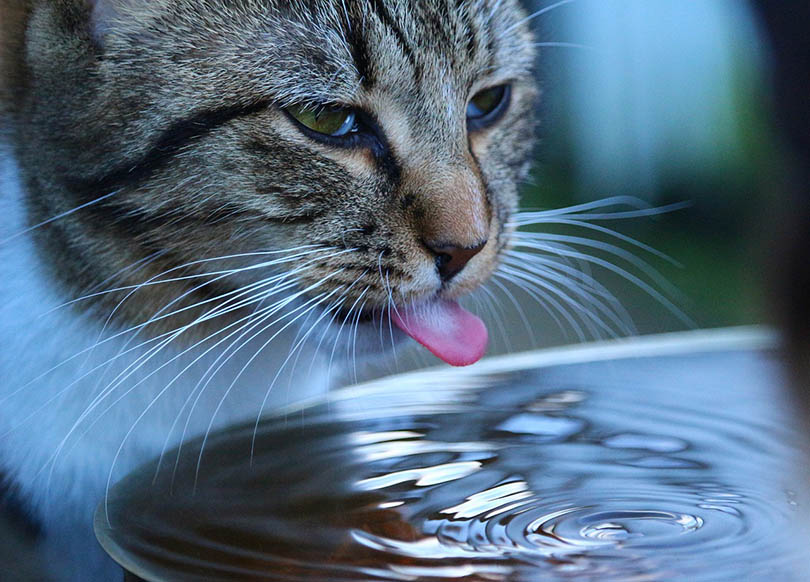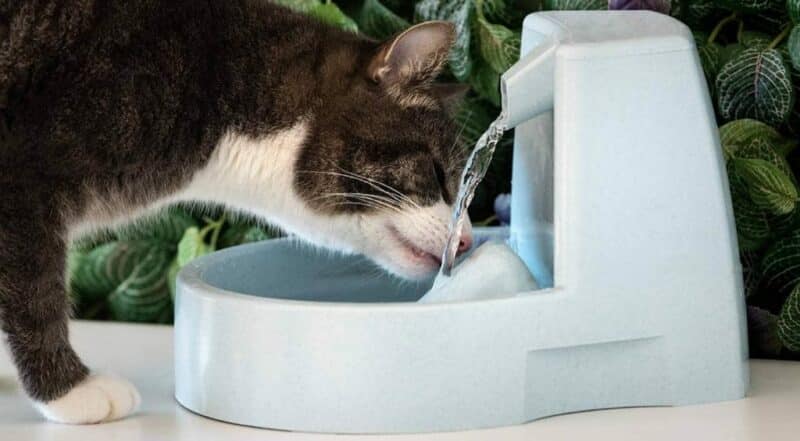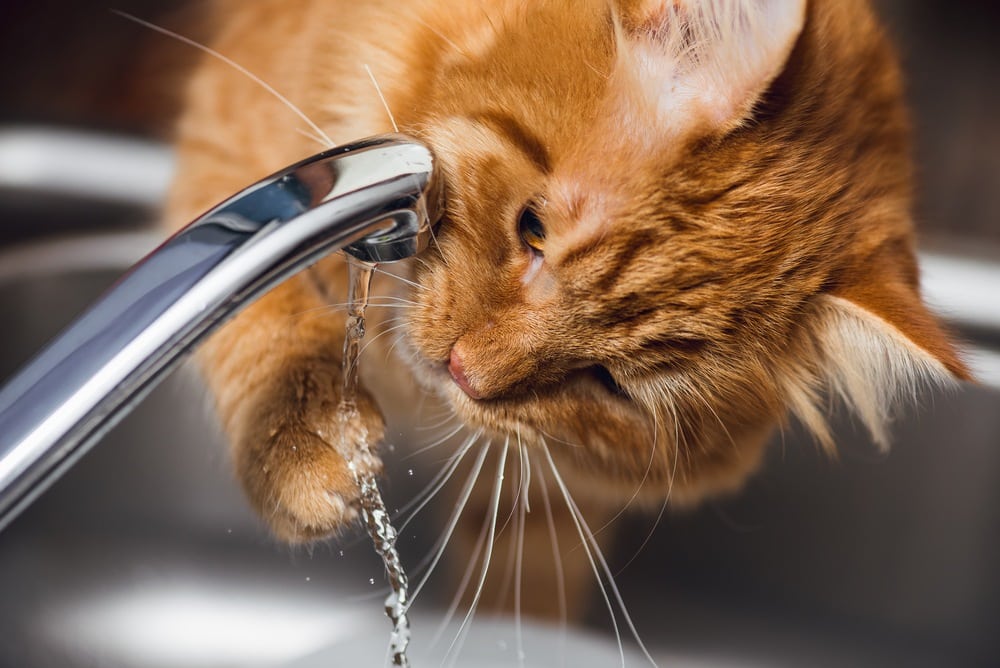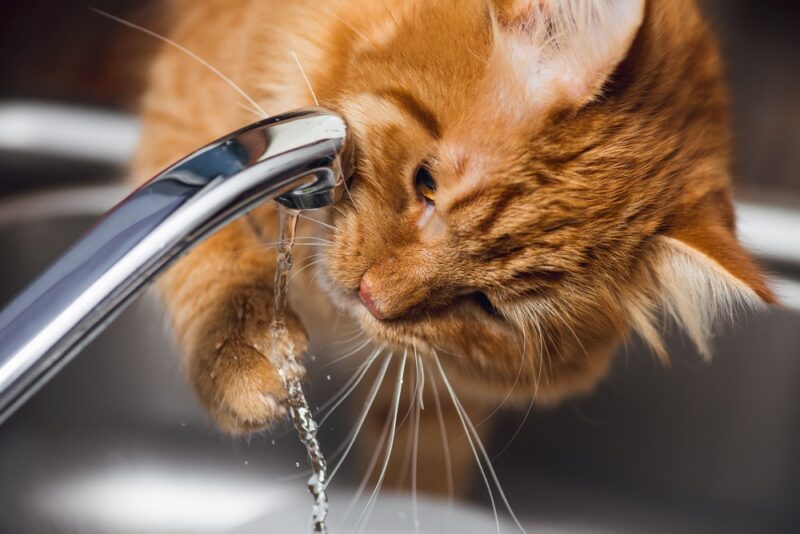Cats drinking water with their paws is a common behavior, but it can be perplexing for owners. Many owners notice their cats drinking water from the water bowl using their furry paws like a little cup or paddle. It is very cute, but it also brings up the question of why does this happen? What prompts your cat to do it? What are they thinking?
There are a few key reasons why cats may choose to drink using their paws.
The 4 Possible Reasons Your Cat Is Drinking Water With Their Paw
1. The Water Bowl Is Too Small
Cats like to have access to a large supply of water, and if their bowl is too small, they may not be able to drink water from it properly. This would cause them to use their paw as a clever way to dip into the water and get a cool refreshing sip. So, if you see your cat drinking water this way, check their bowl.
- NO MESS - The 360° tray on this cat food and water bowl set has a raised design to catch and...
- WHISKER FRIENDLY - Shallow and wide metal containers with flat bottoms ensure your kitty can enjoy...
- CHEW-SAFE MATERIALS - Kittens and cats love chewing on silicone and soft rubber - but it's a choking...
Choosing the right food and water bowls for our feline companions can pose certain challenges for pet owners. The Hepper NomNom Cat Bowl provides a chic and innovative solution that supports cat specific needs, such as shallow bowls and a subtle elevation that fosters whisker relief, posture comfort, and improves digestion. It features an elegant contemporary design with a wide wrap-around tray aimed at minimizing any messes from ending up on your floor! Furthermore, this bowl is entirely dishwasher safe, so pet owners are able to spend more time with their cats instead of cleaning up after them. Discover why the Hepper NomNom Cat Bowl is right for both you and your kitty by clicking here.
At Catster, we’ve admired Hepper for many years and decided to take a controlling ownership interest so that we could benefit from the outstanding designs of this cool cat company!
2. The Cat Is Experiencing Whisker Fatigue
The second reason is that cats may experience whisker fatigue. This may sound like a weird and made-up condition, but if you had long hairs sticking out from your face, you might also find this is a real concern! Cats have sensitive whiskers that can be irritated by the sides of the water bowl. Therefore, cats may choose to drink water using their paw to avoid continuing this irritation. There are plenty of “whisker-friendly” bowls on the market that you can replace the old bowl with.

3. They Are Just Playing
The third reason is that cats may simply be playing. Cats are naturally curious creatures and might be just experimenting or enjoying doing things differently. They like playing and interacting with their bodies, chasing their tails, or grooming themselves. When they splash around in the water with their paws, they may just be doing this as their way of interacting, exploring, and engaging with play.
4. The Cat Is Avoiding Stagnant Water

The fourth reason is that cats may avoid stagnant water in their bowl. Cats can be picky about the water they drink, and if the water in their bowl has been standing for a while, they may choose to avoid it. This comes from an instinct to avoid standing water that can be filled with contaminants or other poisons. Cats love moving water! This may be why you catch your cat sipping at the faucet or even trying to drink from the toilet bowl. When they use their paws, it’s a way to create more flow and movement around the water they have available to them. You can find water fountains for your cat online.
Conclusion
Overall, cats drinking water with their paws is a common behavior that can be perplexing for owners. There are a few key reasons why cats may choose to do so, such as their water bowl being too small, whisker fatigue, playing, and avoiding stagnant water in their bowl.
Understanding these reasons can help owners better understand their cats’ behavior and provide them with the best drinking experience possible. Cats tend to be picky when keeping hydrated, so ensuring your cat has plenty to drink is essential!
Featured Image Credit: Sample Stars, Shutterstock














